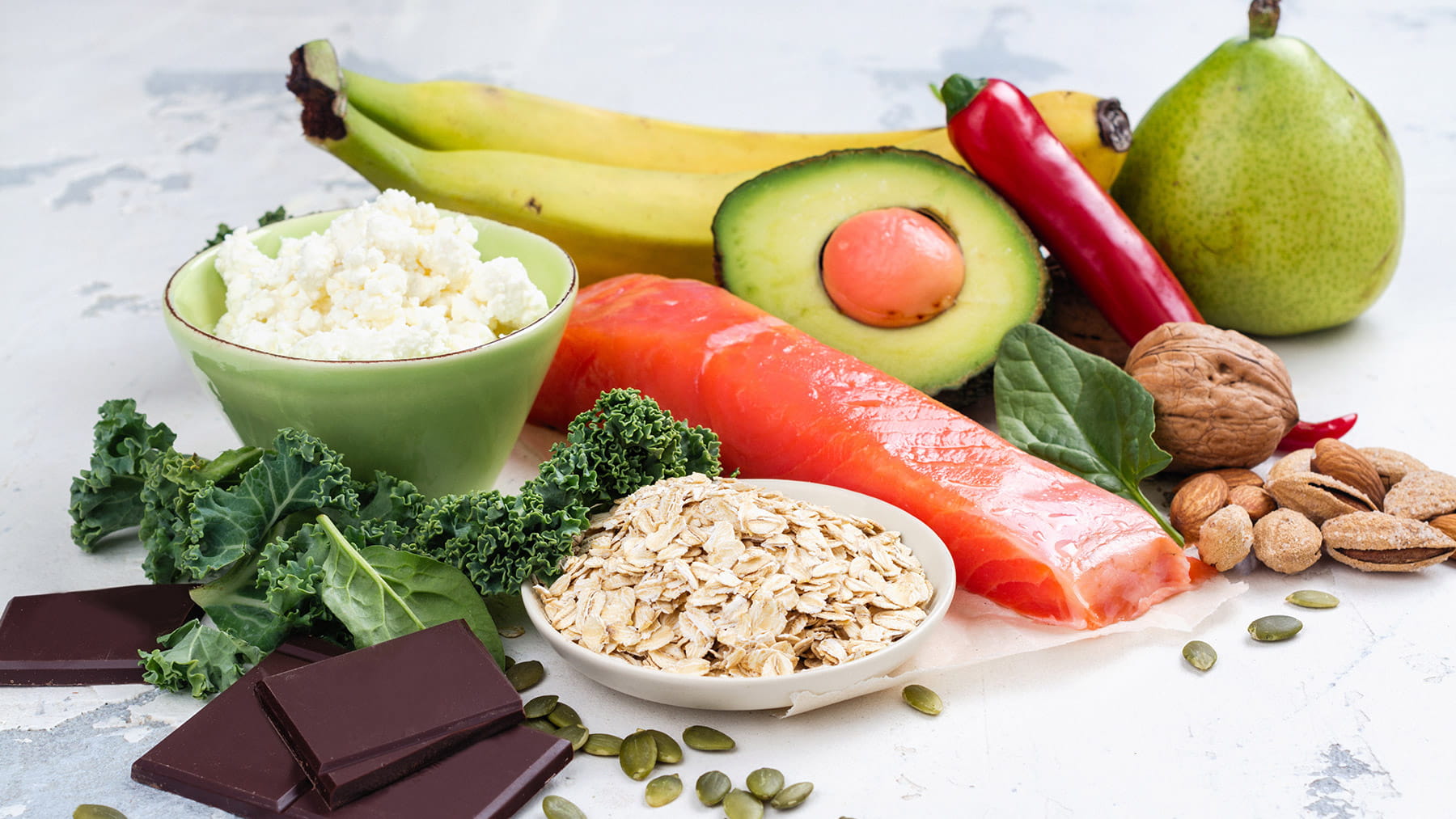Carb cycling diets involve alternating high and low carbohydrate intake to optimize weight loss and muscle gain. Carb cycling diets have gained popularity as an effective approach to weight management and muscle building.
By alternating between high and low carbohydrate intake on specific days or at specific times, these diets aim to optimize both fat loss and muscle gain. This method is based on the premise that consuming more carbohydrates on certain days can provide the energy needed for intense workouts while restricting carbohydrates on other days can promote fat burning.
Additionally, carb cycling can help maintain a balanced hormonal profile, prevent metabolic adaptation, and improve insulin sensitivity. This article explores carb cycling diets, their benefits, and how to implement them effectively for individuals looking to achieve their fitness goals.
Table of Contents
Unlocking Carb Cycling Diets
Carb cycling is an effective method for managing carbohydrate intake, optimizing performance, and promoting a healthy body composition. This dietary approach involves alternating between high and low carb days to maximize energy levels and fat burning potential.
Carb cycling involves strategically varying carbohydrate intake on different days. On high carb days, individuals consume a higher amount of carbohydrates to fuel intense workouts and replenish glycogen stores. These days are typically aligned with heavy training days. On low carb days, carbohydrate intake is restricted to promote fat burning and improve insulin sensitivity. These days are often associated with rest or lighter training days.
- Individualized Approach: Carb cycling can be tailored to an individual’s specific goals, activity level, and preferences.
- Timing: Carbohydrate intake is strategically adjusted based on training schedule and energy demands.
- Macro Distribution: Carb cycling focuses on varying carbohydrate intake while still meeting protein and fat requirements.
- Flexibility: Carb cycling allows for flexibility in food choices, as long as the overall macronutrient goals are met.
There are various carb cycling protocols that can be utilized, such as:
| Protocol | Description |
|---|---|
| The Classic Approach | Consists of alternating between high and low carb days throughout the week, typically with higher carbs on training days. |
| The 2:1 Approach | Involves two consecutive days of low carb followed by one high carb day. |
| The 5:2 Approach | Utilizes five days of low carb followed by two consecutive high carb days. |
Carb cycling diets can be a valuable tool for individuals aiming to optimize their nutrition and achieve their fitness goals. By strategically manipulating carbohydrate intake, individuals can fuel their workouts, optimize fat burning, and improve overall body composition.
Carb Cycling Simplified
Carb cycling is a dietary approach where you alternate between high and low carbohydrate intake days. This helps to optimize your body’s energy usage and promote fat loss. During the high carb days, you consume a larger amount of carbohydrates to fuel your workouts and replenish glycogen stores. On the low carb days, you restrict your carbohydrate intake, forcing your body to use stored fat as an energy source.
Macronutrients, including carbohydrates, proteins, and fats, play a crucial role in carb cycling diets. Carbohydrates are the body’s main source of energy, while proteins are essential for muscle repair and growth. Fats provide satiety and support hormonal function. By manipulating the amounts of these macronutrients on different days, carb cycling optimizes your body’s ability to burn fat while preserving muscle mass.
| Benefits | Explanation |
|---|---|
| Improved Fat Loss | By cycling carbs, you keep your metabolism guessing and prevent it from adapting to a specific intake, leading to continued fat loss. |
| Preserved Muscle Mass | By strategically timing high carb days, you ensure that your body has enough energy to support muscle growth and recovery. |
| Enhanced Performance | Consuming more carbs on high-intensity workout days can provide the energy needed to perform at your best. |
| Improved Insulin Sensitivity | Carb cycling can improve insulin sensitivity, which is beneficial for overall health and weight management. |
Transform Your Body Techniques
Carb Cycling DietsCustomizing your carb cycling plan is crucial to achieving optimal results. To determine the right amount of carbs for your body, start by calculating your daily caloric needs. Once you have this number, you can then divide it into high and low carb days. On high carb days, aim to consume approximately 1.5-2 grams of carbs per pound of body weight. This will provide your muscles with the necessary fuel to power through intense workouts and aid in recovery. On low carb days, reduce your carb intake to around 0.5-1 gram per pound of body weight. This helps stimulate fat burning and promotes lean muscle growth. Finding the right balance between high and low carb days will depend on your individual goals and metabolic response.
The structure of your high and low carb days will largely depend on your training schedule and lifestyle. For example, if you have intense workout sessions scheduled on certain days, it would be wise to include those days as high carb days to fuel performance. On non-training or lighter workout days, you can opt for low carb days to promote fat burning. It’s important to listen to your body and make adjustments as needed. Remember, the key to successful carb cycling is personalization and finding the right balance that works for you.
Meal Planning For Success
Carb cycling diets can be successful for meal planning. By strategically alternating between high and low carb days, this approach can optimize energy levels and support weight loss goals.
Meal planning is a crucial aspect of success when following a carb cycling diet. Designing carb cycling meals requires careful consideration of portion sizes and meal timing.
To effectively design carb cycling meals, it’s essential to understand portion sizes. Pay attention to the amount of carbohydrates, proteins, and fats to ensure a balanced meal. Include a variety of healthy carbohydrates such as whole grains, fruits, and vegetables. Lean proteins like chicken, turkey, and fish should also be incorporated. Don’t forget to include healthy fats from sources like avocados, nuts, and olive oil.
Timing is another key factor in meal planning for carb cycling diets. Coordinate your meals with your activity level and exercise schedule. Consuming a higher amount of carbohydrates in meals before and after intense workouts can provide the necessary energy and aid in recovery.
Sample meal plans and recipes can be helpful in getting started with carb cycling. Look for ideas that fit your preferences and dietary needs. Experiment with different combinations and flavors to keep your meals interesting and enjoyable.
Training On Carb Cycling Diets
- Strength Training Considerations
- Endurance Training on Different Carb Days
Carb cycling diets can provide significant benefits when it comes to optimizing workouts. By strategically timing carb intake, individuals can tailor their nutrition to different types of training.
| Training Type | Carb Days | Benefits |
|---|---|---|
| Strength Training | High Carb Days | Maximize energy for intense workouts. |
| Endurance Training | Low Carb Days | Promote fat burning and improve endurance. |
When it comes to strength training, it is important to consider the timing of carb intake. High carb days provide the necessary fuel for intense workouts, helping to maximize performance and support muscle growth and recovery.
On the other hand, endurance training on different carb days can have its advantages. Low carb days promote fat burning and teach the body to tap into stored energy sources. This can enhance endurance and improve the body’s ability to sustain activity for longer periods.
Monitoring Your Progress
Tracking changes in body composition is an essential part of managing your carb cycling diet. Regularly analyzing your results will give you valuable insights into the effectiveness of your diet plan. Keep track of your weight, body fat percentage, and measurements to evaluate your progress over time. Fluctuations are normal, so look for long-term trends rather than day-to-day changes. If you hit a plateau where you’re not seeing any further progress, it may be time to adjust your diet. Decreasing your carb intake or increasing your activity levels can help break through the plateau. Remember that each person’s body is different, so listen to your body and make adjustments accordingly. Additionally, understanding when to cycle off carb cycling is important. Consider taking a break from carb cycling if you experience fatigue, hormonal imbalances, or any other negative effects. Always consult with a healthcare professional before making any significant changes to your diet or exercise regimen.
:max_bytes(150000):strip_icc()/6-of-the-best-foods-to-eat-more-of-when-youre-exercising-more-according-to-dietitians-382188df9d8b4d0f8c069afb3a1e532d.jpg)
Credit: www.eatingwell.com
Frequently Asked Questions For Carb Cycling Diets
What Is A Carb Cycling Diet?
A carb cycling diet is a nutritional strategy that involves alternating carbohydrate intake on different days to optimize fat loss and muscle growth. It allows for high-carb days to fuel intense workouts and low-carb days to promote fat burning.
How Does Carb Cycling Work?
Carb cycling works by manipulating your carbohydrate intake to maximize fat loss and muscle gain. It helps regulate insulin levels, boost metabolism, and improve nutrient partitioning. On high-carb days, your body replenishes glycogen stores, while on low-carb days, it taps into stored fat for energy.
What Are The Benefits Of Carb Cycling?
Carb cycling offers several benefits, including improved fat loss, muscle retention, increased energy levels, enhanced endurance, and better digestion. It also helps prevent metabolic adaptation, promotes hormonal balance, and provides flexibility in food choices.
Is Carb Cycling Suitable For Everyone?
Carb cycling can be effective for most individuals, particularly those looking to change their body composition. However, it may require careful planning and monitoring, making it more suitable for people with specific fitness goals and dietary needs.
Conclusion
Carb cycling diets prove to be an effective strategy for weight loss and improving overall body composition. By strategically manipulating carbohydrate intake, individuals can optimize energy levels, improve muscle growth, and enhance fat burning. The flexibility and customization of carb cycling make it a sustainable approach to nutrition for those seeking long-term results.
Remember, consultation with a healthcare professional is crucial before embarking on any dietary plan. Embrace this method and transform your body.








